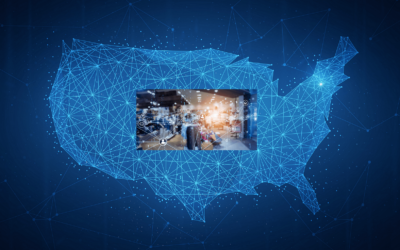Original post on SD-WAN Resource
The WAN edge is critical to supporting the best user experiences from client-to-cloud, a challenge that was fundamental to Juniper Networks’ acquisition of 128 Technology at the end of 2019. That transaction created what was arguably the most unique and innovative technology in the SD-WAN space since its inception, by bringing indispensable insight and control to Juniper and, more importantly, to the Managed Service Providers (MSPs) who are transforming mission-critical, distributed enterprise networks for their global customer bases.
“By introducing new capabilities like service level expectations (SLEs), anomaly detection, and prescriptive AI-driven actions via Marvis, the Virtual Network Assistant, it completely changed the WAN space with simplified Day 2 operations, reduced mean time to repair and, most importantly, it provided the best visibility into end-user experiences,” said Jeff Li, Senior Director, Risk, Governance, Partners, and Projects at ConnX, which has integrated Juniper technologies into its AI SD-WAN offering with real-time “Active Assurance” software and services.
Not only has investment and innovation in the cloud and software telco realm led to more predictable, precisely measurable SLAs, Juniper also continues to design and manufacture new edge hardware that is easier to deploy, including Zero Touch Provisioning. ZTP was added to the SSR portfolio, making it easier for MSPs and their customers to get up and running with new cloud-ready appliances.
Customers can onboard their SSR device centrally by simply relying on “smart hands” in the field to plug in the device and scan its claim code, causing it to provision automatically and come online. Along with the Mist APs and EX switches, it brings a simple, seamless solution, allowing IT teams to significantly reduce the time to value for any branch site.
“Our combined offering also has led to enhanced security, given Juniper’s unique zero trust architecture that includes IDS/IPS and URL filtering capabilities,” Li said.
URL Filtering allows IT teams to prevent access to or from specific sites on the internet, allowing them to meet business and security requirements, while IDS/IDP further protects branch sites from advanced malicious attacks that have been on the rise.
“These capabilities help distinguish Juniper’s offering, and when delivered with our world-leading managed services – from network design to deployment, implementation, and 24/7/365 management, customers across multiple industries are choosing to transform their networks from cloud to edge and edge to edge,” Li said. “We’re looking forward to including a huge success story in the retail industry made possible through our collaboration.
The retail use case will be part of an upcoming webinar, which will be moderated by Erik Linask of TMCnet, on Thursday, March 23, 2023, from 2:00 pm ET/11:00 am PT.
What Attendees will learn:
- What it means to have a truly AI-driven Edge in the age of AI-washing
- How features like predictive insights, anomaly detection, and automated troubleshooting help enterprises solve issues at the edge before they impact the end user.
- How fully integrated AIOps, security, and troubleshooting, from edge-to-edge and in the cloud, can help enterprises achieve better user experiences at lower costs.
- Why intelligence and automation at the edge guarantee superior availability and fidelity for voice, video, and real-time collaboration.
- How AI at the edge is improving business outcomes in the retail, healthcare, life sciences, government, and financial services industries.
Jeff Li, Sr. Director, Risk, Governance, Projects, and Partner at ConnX, and Justin Melloni, Product Marketing Manager at Juniper Networks, will broadcast this new webinar where participants can ask questions in real time, and we can all learn from each other.









